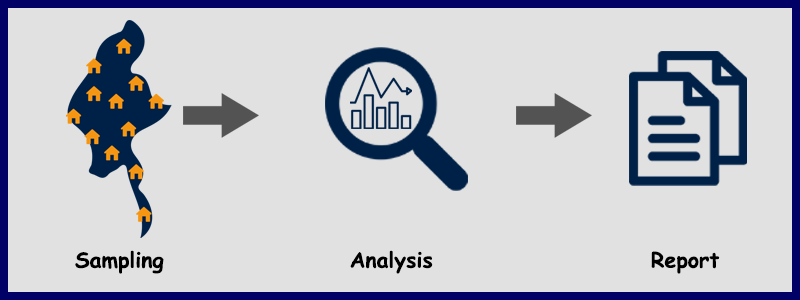Sample Based Observation

Sample Based Observation
Throughout its comprehensive observation of the election process, PACE designed and implemented systematic methodologies to ensure that their findings accurately represented the observed aspects of the process. When possible, PACE used statistically random samples, which allowed it to assess the quality of the process throughout the by-election areas.
When training the volunteer observers, PACE emphasized their commitment to nonpartisanship and independence, as well as the observer code of conduct. Observers received information about the observation methodology, including how to complete and submit the survey questionnaires and observation checklists.
Campaign environment
PACE deployed long-term observers (LTOs) from specific townships participating in the elections. PACE’s LTOs conducted interviews with candidates from parties. In weekly interviews, the observers asked candidates questions about their campaign activities and challenges that they faced.
PACE also observed rallies conducted by candidates from the parties. PACE did not observe informal party gatherings or other political events conducted by other actors. In some cases, PACE was unable to observe rallies in very remote locations due to logistical challenges. PACE did not directly observe other political events or speeches by those not formally affiliated with the candidate.
PACE’s observers also conducted interviews with members of the township sub-commission offices during the observation period. The LTOs asked how many official complaints had been submitted by candidates the previous week, and if the commission had conducted any voter education targeted at women.
Finally, PACE’s LTOs conducted interviews with different categories of voters -- women, men, youth, ethnic minorities and migrant/industrial/low-income workers -- within election constituency. PACE’s methodology was designed to identify trends in the overall campaign environment. It did not focus on particular candidates, political races or incidents that may have been covered by media reports.
Voter list update process
PACE deployed observers to monitor the public display of the voter list at randomly selected display centers across states and regions. During this process, PACE focused only on the UEC’s process to update the voter list, and not on the completeness or accuracy of the voter list itself.
Specifically, observers monitored the level of voter engagement, the efficiency of the sub-commission’s capacities and procedures, and the presence of party representatives at the display locations. Each observer was assigned to observe a specific display center for the duration of his or her deployment.
In-constituency advance voting
PACE deployed long-term observers for four days to a randomly-selected sample of wards and village tracts to monitor the advance voting process both at the sub-commission offices and during mobile voting. Each LTO was tasked to observe at his or her assigned sub-commission office during office hours, and follow the mobile ballot box if there were mobile voting.
PACE observers focused on the voting process, including whether the UEC’s procedures and guidelines were followed by officials, whether citizens were able to cast their votes without any intimidation, and whether the secrecy of the vote was ensured.
Election Day Sample Based Observation
PACE deployed nonpartisan observers to polling stations in election constituency to conduct a Sample Based Observation (SBO) of election-day procedures.
A Sample Based Observation (SBO) is an advanced observation methodology that employs well-established statistical principles and sophisticated information technology. An SBO involves the use of a representative sample of all polling stations conducting elections to systematically assess the quality of the voting and counting process on election day. SBOs provide the most timely and accurate information on the conduct of voting and counting.
PACE’s SBO for the elections involved deploying citizen observers to a random sample of polling stations in the targeted election constituencies. PACE’s citizen observers arrived to their assigned polling stations at 5:00 am. They observed the setup of polling stations, voting, counting, and the announcement and posting of results. Throughout the day, observers called the data center at four designated times to report their observations. The SBO observers collected and reported all data points.
Tabulation
PACE deployed observers to monitor the results tabulation process at tabulation centers at each of the targeted townships. The LTOs began their observation on election day at 3 pm, and stayed at the tabulation centers until the tabulation process was completed. If necessary, they were instructed to return to the tabulation center the following day to observe the rest of the process.
PACE’s observers focused on the level of transparency and accountability by observing whether the results were recorded correctly, whether election officials followed all the guidelines and procedures regarding the tabulation, and whether observers and party agents were allowed to witness the process.

